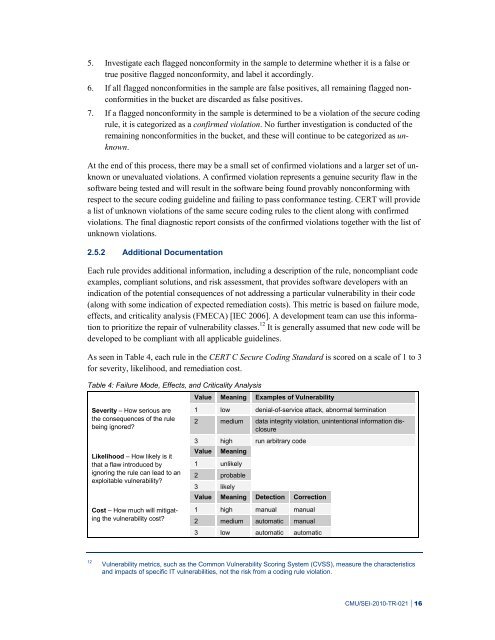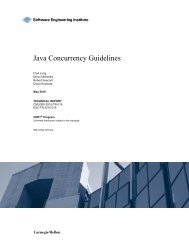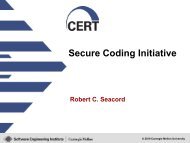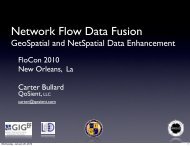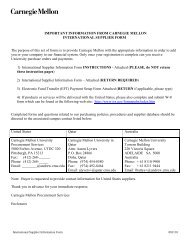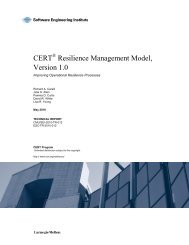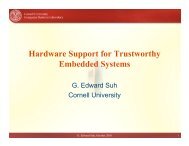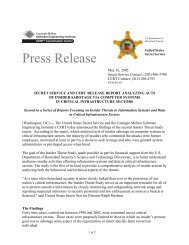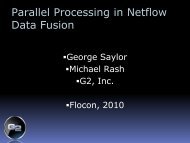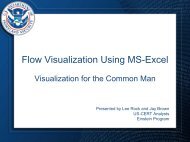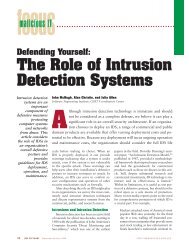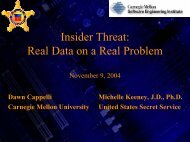Source Code Analysis Laboratory (SCALe) for Energy ... - CERT
Source Code Analysis Laboratory (SCALe) for Energy ... - CERT
Source Code Analysis Laboratory (SCALe) for Energy ... - CERT
Create successful ePaper yourself
Turn your PDF publications into a flip-book with our unique Google optimized e-Paper software.
5. Investigate each flagged noncon<strong>for</strong>mity in the sample to determine whether it is a false or<br />
true positive flagged noncon<strong>for</strong>mity, and label it accordingly.<br />
6. If all flagged noncon<strong>for</strong>mities in the sample are false positives, all remaining flagged noncon<strong>for</strong>mities<br />
in the bucket are discarded as false positives.<br />
7. If a flagged noncon<strong>for</strong>mity in the sample is determined to be a violation of the secure coding<br />
rule, it is categorized as a confirmed violation. No further investigation is conducted of the<br />
remaining noncon<strong>for</strong>mities in the bucket, and these will continue to be categorized as unknown.<br />
At the end of this process, there may be a small set of confirmed violations and a larger set of unknown<br />
or unevaluated violations. A confirmed violation represents a genuine security flaw in the<br />
software being tested and will result in the software being found provably noncon<strong>for</strong>ming with<br />
respect to the secure coding guideline and failing to pass con<strong>for</strong>mance testing. <strong>CERT</strong> will provide<br />
a list of unknown violations of the same secure coding rules to the client along with confirmed<br />
violations. The final diagnostic report consists of the confirmed violations together with the list of<br />
unknown violations.<br />
2.5.2 Additional Documentation<br />
Each rule provides additional in<strong>for</strong>mation, including a description of the rule, noncompliant code<br />
examples, compliant solutions, and risk assessment, that provides software developers with an<br />
indication of the potential consequences of not addressing a particular vulnerability in their code<br />
(along with some indication of expected remediation costs). This metric is based on failure mode,<br />
effects, and criticality analysis (FMECA) [IEC 2006]. A development team can use this in<strong>for</strong>mation<br />
to prioritize the repair of vulnerability classes. 12 It is generally assumed that new code will be<br />
developed to be compliant with all applicable guidelines.<br />
As seen in Table 4, each rule in the <strong>CERT</strong> C Secure Coding Standard is scored on a scale of 1 to 3<br />
<strong>for</strong> severity, likelihood, and remediation cost.<br />
Table 4: Failure Mode, Effects, and Criticality <strong>Analysis</strong><br />
Severity – How serious are<br />
the consequences of the rule<br />
being ignored?<br />
Likelihood – How likely is it<br />
that a flaw introduced by<br />
ignoring the rule can lead to an<br />
exploitable vulnerability?<br />
Cost – How much will mitigating<br />
the vulnerability cost?<br />
Value Meaning Examples of Vulnerability<br />
1 low denial-of-service attack, abnormal termination<br />
2 medium data integrity violation, unintentional in<strong>for</strong>mation disclosure<br />
3 high run arbitrary code<br />
Value Meaning<br />
1 unlikely<br />
2 probable<br />
3 likely<br />
Value Meaning Detection Correction<br />
1 high manual manual<br />
2 medium automatic manual<br />
3 low automatic automatic<br />
12 Vulnerability metrics, such as the Common Vulnerability Scoring System (CVSS), measure the characteristics<br />
and impacts of specific IT vulnerabilities, not the risk from a coding rule violation.<br />
CMU/SEI-2010-TR-021 | 16


